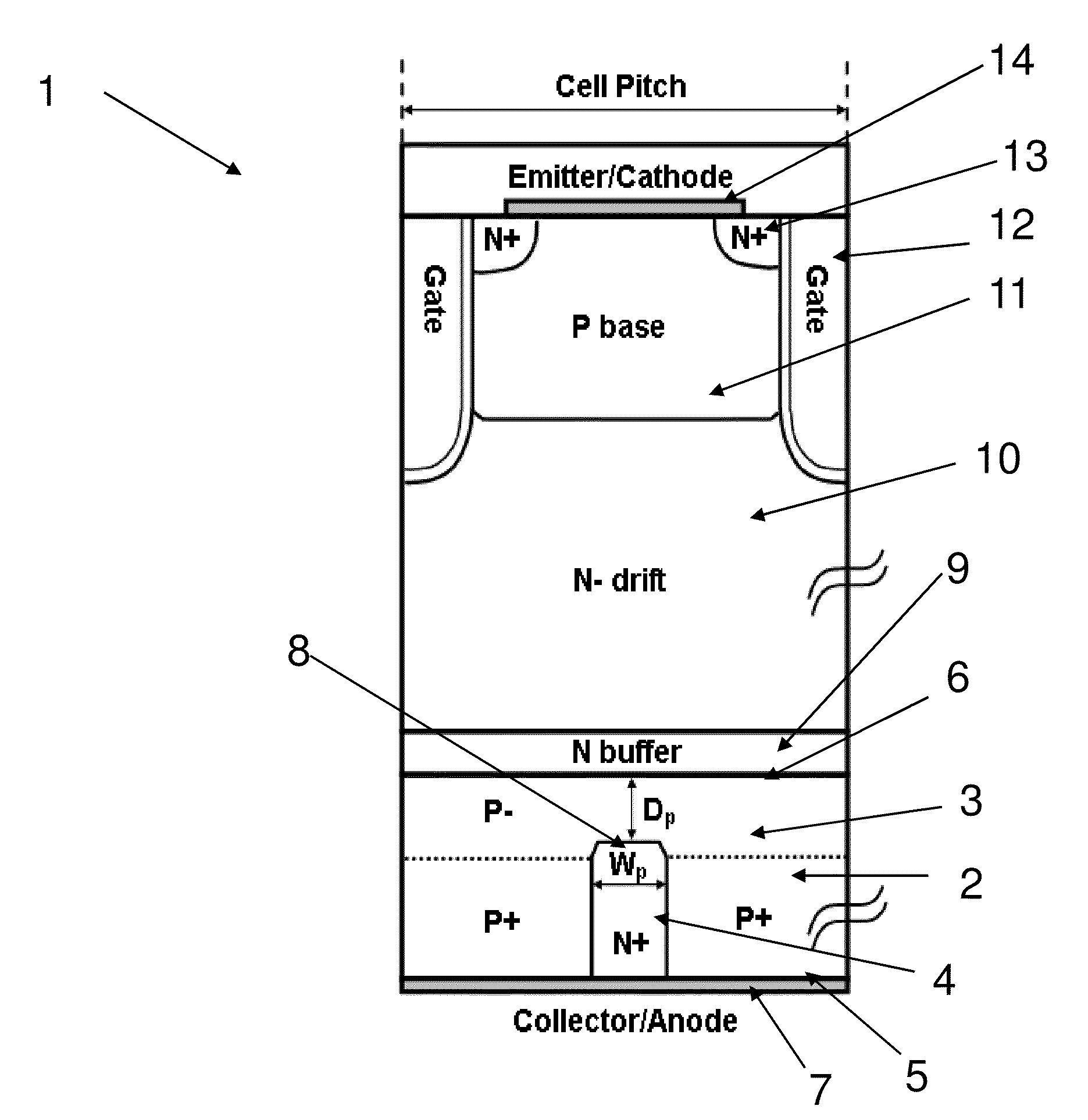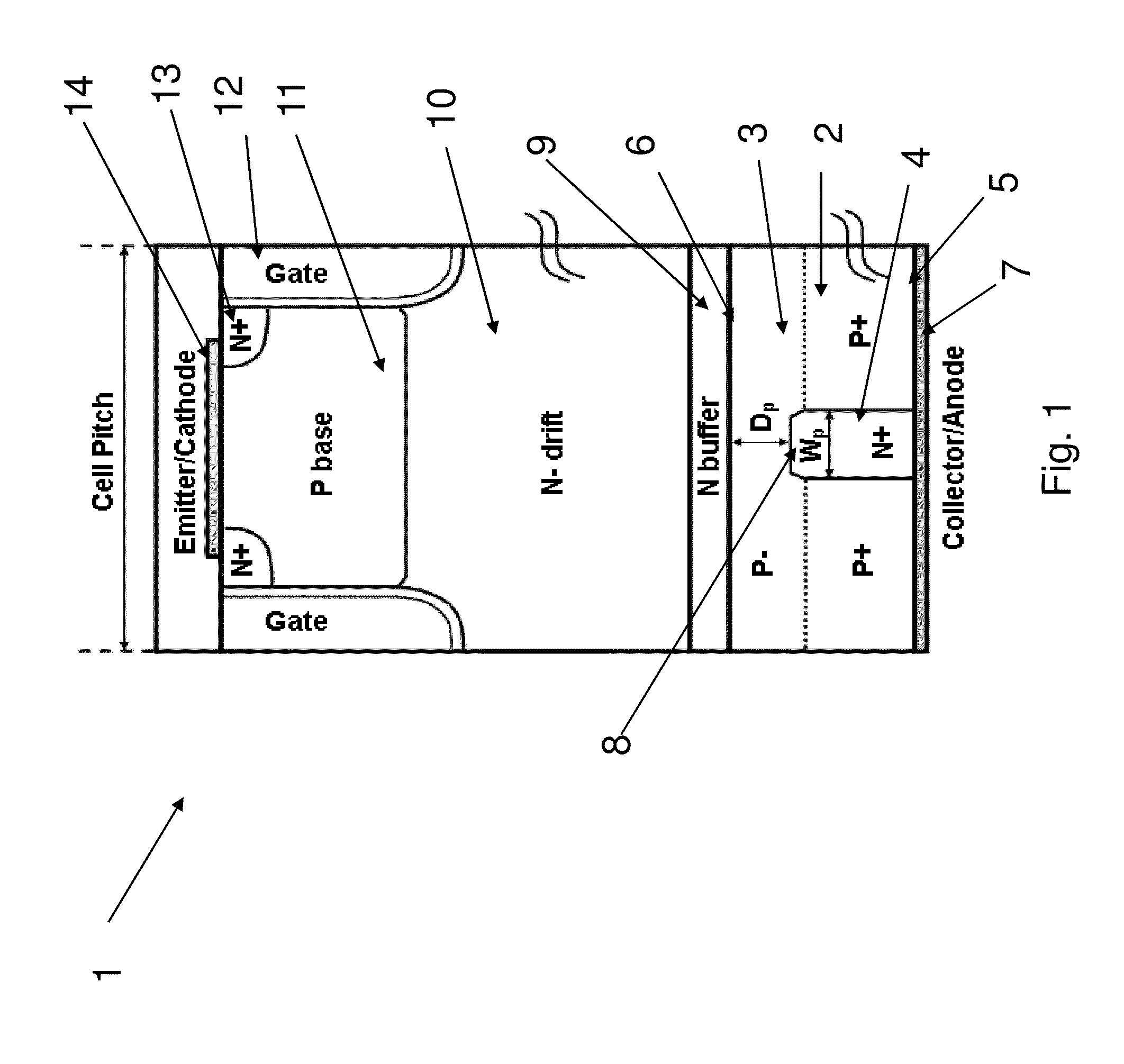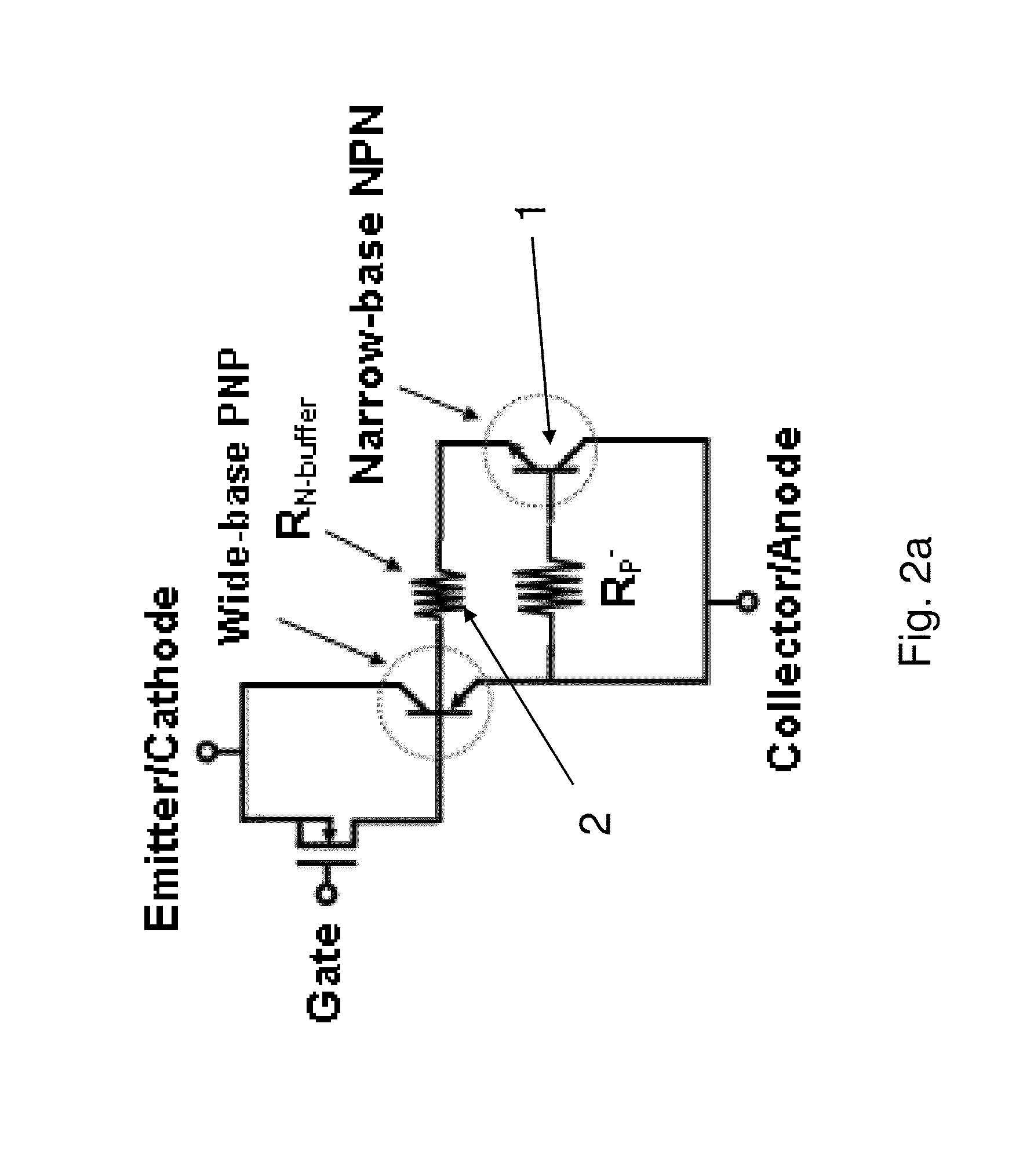Reverse conducting IGBT
a reverse conducting, bipolar transistor technology, applied in the direction of transistors, semiconductor devices, electrical apparatus, etc., can solve the problems of additional testing time, increased material costs, and associated cost of the package, and achieves the effect of simple and cost-effectiv
- Summary
- Abstract
- Description
- Claims
- Application Information
AI Technical Summary
Benefits of technology
Problems solved by technology
Method used
Image
Examples
Embodiment Construction
[0040]FIG. 1 is a schematic representation of a RC-IGBT structure according to the present invention. The transistor 1 is formed on a P-type substrate 2 which has a first surface 5 and a second surface 6 opposite to the first surface 5. A N+ column region 4 is formed on the first surface 5 which is along an anode / collector electrode 7. In addition, the P-type substrate is divided into two layers: the bottom layer is a highly-doped P+ layer 2, and the top layer is a lowly-doped P− layer 3. The interface between the P− layer 3 and the P+ layer 2 has a height which is about the same as the height of the N+ column region 4. There is provided a N-buffer region 9 above the P− layer 3, which is only present in a punch-through (PT) IGBT or a soft-punch-through IGBT. A N-drift region 10 is formed on the N-buffer region 9. There is also provided a P-base region 11 on the N-drift region 10 and a N+ region 13 on the P-base region 11. A gate region 12 is disposed to form a channel between the N+...
PUM
 Login to View More
Login to View More Abstract
Description
Claims
Application Information
 Login to View More
Login to View More - R&D
- Intellectual Property
- Life Sciences
- Materials
- Tech Scout
- Unparalleled Data Quality
- Higher Quality Content
- 60% Fewer Hallucinations
Browse by: Latest US Patents, China's latest patents, Technical Efficacy Thesaurus, Application Domain, Technology Topic, Popular Technical Reports.
© 2025 PatSnap. All rights reserved.Legal|Privacy policy|Modern Slavery Act Transparency Statement|Sitemap|About US| Contact US: help@patsnap.com



